Among the various types of lizards found on the Iberian Peninsula are the red-tailed lizard (Acanthodactylus erythrurus), Iberian wall lizard (Podarcis hispanicus), large psammodromus (Psammodromus algirus), and Spanish psammodromus (Psammodromus hispanicus), among others. This article introduces several representative species of Iberian lizards.
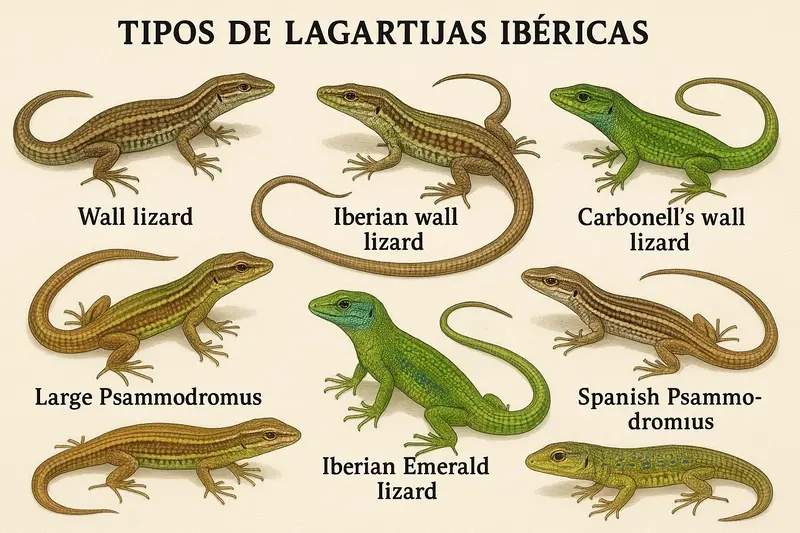
Red-tailed Lizard
Turkish Gecko
Iberian Wall Lizard
Large Psammodromus
Spanish Psammodromus
Carpetane Lizard
Mountain Lizard
Valverde's Lizard
Pallaresa Lizard
Alboran Gecko

The red-tailed lizard is native to the Iberian Peninsula and northwestern Africa. It inhabits sandy or rocky terrain with sparse vegetation, including disturbed areas. Its name comes from the characteristic red coloring at the end of its tail. It feeds primarily on insects but may also consume plant material during spring and summer.
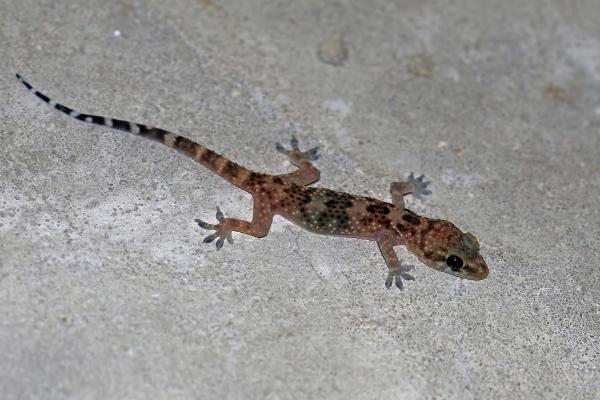
The Turkish gecko is native to Spain, Portugal, France, the Italian coast, and many Mediterranean islands. It has also been introduced to parts of the Americas. This highly adaptable species can be found in various environments, including indoors. It is nocturnal, insectivorous, and pale-colored with black spots.
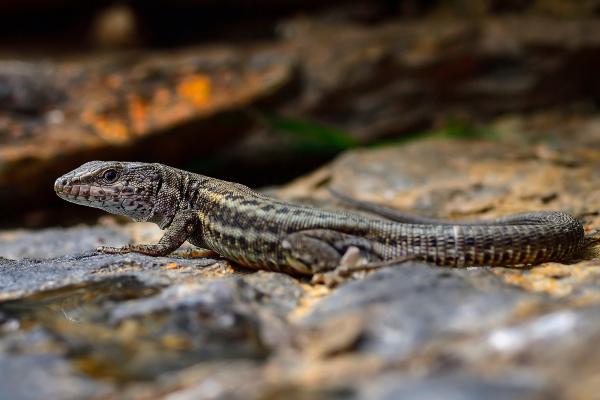
This lizard is widespread across the Iberian Peninsula (excluding high mountain areas), North Africa, and southeastern France. Males are usually larger than females, with a triangular head and prominent scales. Their coloration varies depending on their habitat—lighter tones in drier, rockier areas. They feed on insects and arachnids both on the ground and in trees.
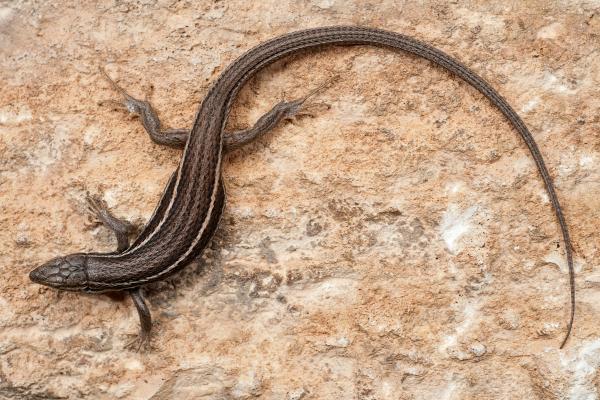
Common in Mediterranean forests, scrublands, and agricultural fields across the Iberian Peninsula. Easily recognized by its long tail, as reflected in its common name. It has a brown body with two white lines along its sides. During mating season, males show orange coloration on their throat and parts of the head. It primarily hunts orthopterans.

Native to France, Portugal, and Spain, this lizard inhabits shrubs, grasslands, sandy coasts, and rural areas. Like the red-tailed and large psammodromus, it emits sharp sounds when caught and has keeled scales. Despite threats from habitat loss due to agriculture and fires, it is listed as Least Concern by the IUCN thanks to its wide range and stable population.
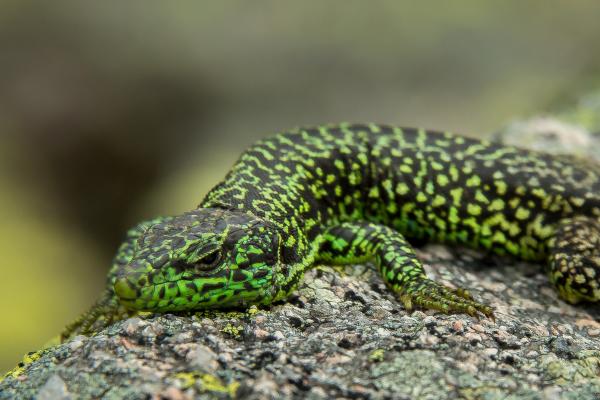
Endemic to Spain's Central System mountain range, this species lives at altitudes from 1,100 to 2,600 meters, often near streams or lakes. It has a sturdy body and a long tail. Its dorsal coloration varies from brown to bright green with dark spots, denser along the sides.
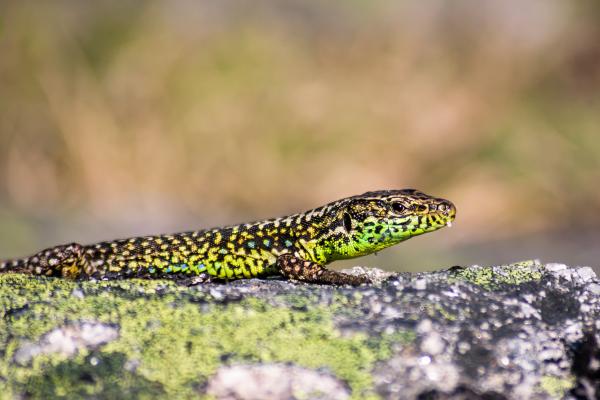
Endemic to the Iberian Peninsula, found in the Cantabrian Mountains, from Galicia to the Picos de Europa, and parts of central Portugal. It is medium-sized and robust, with a brownish or bright green back and a black net-like pattern. Lowland subpopulations are fragmented and threatened by agriculture, forestry, and tourism development.
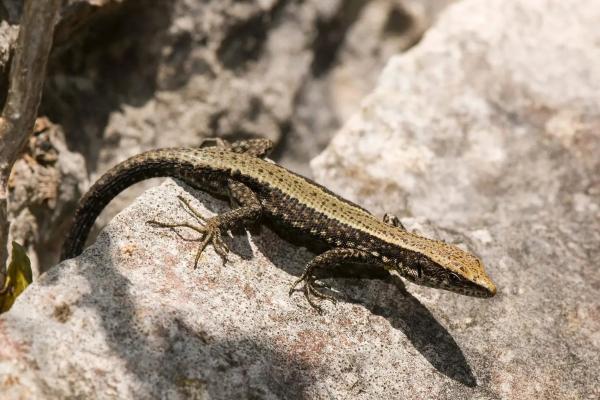
Endemic to southeastern Spain, found in the Prebaetic mountain ranges such as Sierra de Alcaraz, Cazorla, and Segura. Prefers humid rocky areas near or within forests. Highly sensitive to dehydration, making it vulnerable to climate change and habitat degradation. Its belly is bluish, with brown flanks patterned with light and dark spots and a central light brown stripe.

A small lizard inhabiting the Pyrenees, typically found in rocky areas associated with glacial valleys. Its dorsal coloration is very light brown or olive, with two dark lateral stripes and many black spots. Like Valverde’s lizard, climate change is a major threat. It feeds mainly on insects.

Native to Spain, Morocco, and Algeria, this species lives in arid and semi-arid areas with rocky slopes and vegetation for cover. Locally, it is threatened by habitat loss due to urbanization and land use change. It has a brownish back, often without body spots but with spotted tails, and a white V-shaped mark on the head.
Now that you’ve learned about some of the lizards native to the Iberian Peninsula, you might also be interested in reading about The Largest Lizards in the World or Reptiles of Argentina.
We created this article in conjunction with AI technology, then made sure it was fact-checked and edited by a Animals Top editor.